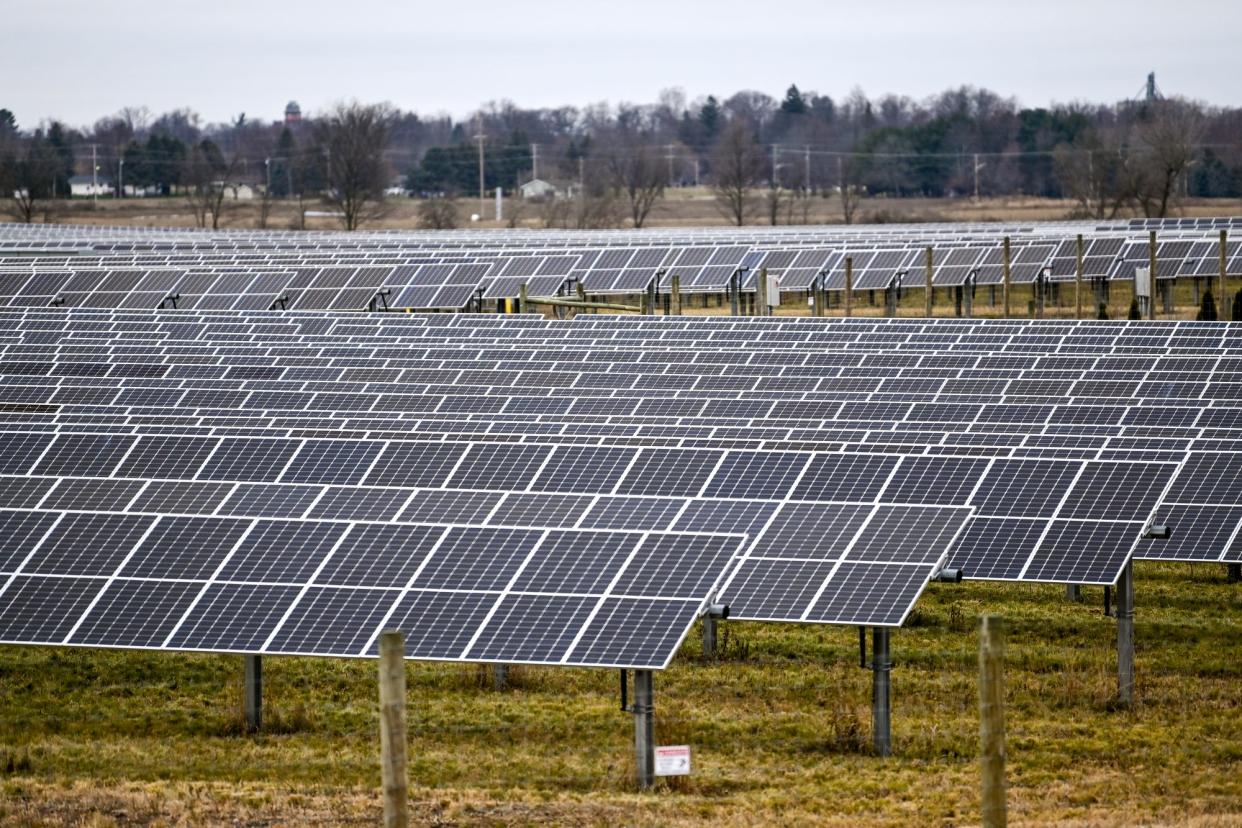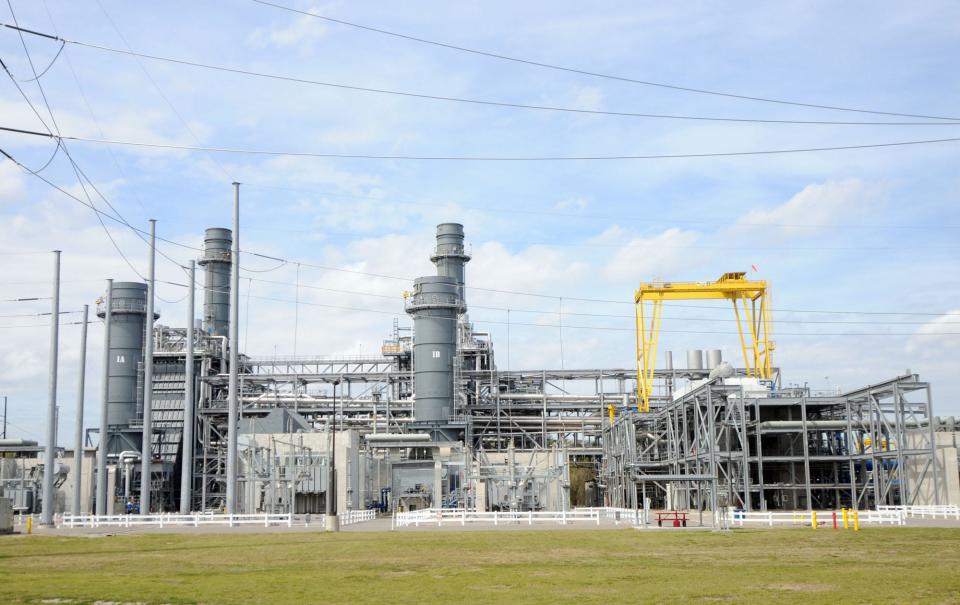North Carolina's future energy roadmap rolled out amid criticisms, Christmas blackouts

For clean energy advocates, the carbon-reduction plan announced by the N.C. Utilities Commission just before the start of the new year relies too much on old, expensive and often dirty solutions, namely natural gas, instead of renewable energy sources. It also leaves the hard choices until a future date − including whether a 2030 deadline to significantly reduce the state's carbon emissions is still feasible.
But Duke Energy is calling the commission's order that lays out what path forward the state should pursue toward a carbon-free energy future a realistic and economically viable plan that promises to keep the lights on and protect consumers while North Carolina transitions to a cleaner energy grid.
"We believe this is a constructive outcome that advances our clean energy transition, supporting a diverse, ‘all of the above’ approach that is essential for long-term resource planning," the company said in a statement.
Under legislation hashed out by Democratic Gov. Roy Cooper, the Republican-controlled General Assembly, and Duke, the state's electric utility providers have until 2030 to reduce carbon emissions by 70% from 2005 levels and reach net-zero emissions by 2050. The law required the utilities commission to develop a roadmap to get there, with the first edition due by the end of 2022.
ENERGY EQUATIONHow to keep the lights on in the future: Duke, environmentalists jostle over future grid
The goal is to reduce the amount of heat-trapping greenhouse gasses the state is pumping into the atmosphere, and thus help slow down the warming of the planet. Power plant emissions are the second biggest source of greenhouse gasses in North Carolina, representing just under 33% of pollutants, according to the state's latest greenhouse gas inventory report. Emissions from transportation sources tops the list. According to the U.S. Energy Information Administration, North Carolina’s current energy mix based on 2021 data is 31% nuclear energy, 33% natural gas, 21% coal, and 15% renewables.
Challenges ahead
A day before the Dec. 31 deadline, the commission published its 137-page order that didn't dictate to Duke on how best to reach that goal, but mandated the company to pursue a range of energy sources − including the possibility of new natural gas plants.
That decision frustrated many clean energy advocates and environmentalists who said the commission short changed renewable and increasingly affordable energy sources like solar and wind and potential energy savings from efficiency programs in favor of traditional power-producing options − like natural gas plants − and emerging, but unproven technologies like hydrogen and small modular nuclear reactors (SMRs).
"I think there was a lot of disappointment that the utilities commission didn't look more seriously at those alternative pathways," said David Neal, senior attorney with the Southern Environmental Law Center, which represents a number of clean energy and environmental groups before the commission.

Joel Porter, policy manager with CleanAIRE NC, said the plan has some good ideas and proposals, but that there is clearly room for improvement − especially when it comes to moving away from a future reliance on fossil fuels, a choice that could make meeting the 2050 net-zero emission goal nearly impossible to meet.
"The potential addition of future natural gas makes it increasingly dangerous for our climate," he said.
But not everyone is against adding more natural gas power to the state's grid. The John Locke Foundation questioned why the commission seemed to be showing a bias toward adding solar at the expense of more reliable and proven power sources, like natural gas. The conservative Raleigh-based thinktank also was concerned about the commission's proposals meeting the legislation's lowest-cost goal, noting the plan released last month doesn't include any financial analysis.
POWER OUTAGECould the slowing economy take the financial wind out of NC's offshore wind farms?
"The public deserves to know what this plan will cost, and it should be transparent if it meets the least cost parameters mandated in the statute," said the group in a statement on the commission's carbon plan.
The commission's order does require Duke to retire its remaining "dirty" coal-fired plants by 2035, something the company had already agreed to do. The plan also mandated that the utility giant:
Purchase more solar, with the goal of having it online by 2028.
Upgrade transmission lines.
Study offshore wind development.
Seek license renewal for its existing nuclear plants, and study adding SMRs.
Add more battery storage capacity.
But the commission seemed to send mixed messages on whether the 2030 compliance requirement was still in effect or would need to be extended. While the plan includes almost all of Duke proposals included in its near-term action plans, the company has said moving forward with those options would very likely mean missing the 2030 reduction goal.
Neal said he thought the 2030 deadline was still possible through the rapid growth of renewable energy sources in the state, "but it's going to be challenging to get there."
'Orderly transition'
The order was issued Dec. 30, less than a week after a frigid Canadian cold front blew into the state just before Christmas and sent temperatures plunging. The plunging temperatures forced Duke to take near 1,300 megawatts of coal and natural gas power offline during a peak demand time, prompting the company to implement rolling blackouts for the first time ever that impacted nearly 500,000 customers across the Carolinas at some point.
The utility's solar energy resources. meanwhile, kicked in as normal as the sun rose, unaffected by the cold weather. Duke officials told state regulators last week that helped prevent even more rolling blackouts over Christmas.
Neal said the rolling blackouts were a sign that North Carolina needs to change its energy mix and think more about reliability and resilience. That should include increasing battery storage capacity for solar and potentially looking into adding more offshore wind, which is a great complementary power source with solar since it often blows the strongest along the N.C. coast during the night and early mornings. Duke currently doesn't have any offshore wind in its power portfolio, although the company has won the rights to develop a wind farm south of Bald Head Island in Brunswick County.
"The assumption that fossil fuel plants are inherently reliable, and other energy sources aren't as reliable, needs to be brought into question," Neal said.

Porter said a thorough review of what happened in late December, and how to avoid a repeat, should be a focal point of regulators and Duke officials.
"Is natural gas what’s really needed to ensure the reliability of the grid versus battery storage, solar or other energy types?” he said. "There are a lot of question marks that event raised.”
The utilities commission also took note of the blackouts, although the event was unlikely to influence what was in its plan due to it happening just days before the order was released.
"The emergency outage events this month particularly underscore the need for an orderly transition away from fossil fuels to low and zero carbon dioxide emitting generating resources while maintaining or improving the reliability of the electric grid," states the release from the commission.
POWERING UP?Duke wants hydrogen as part of NC's future energy mix. Others say it's too risky a bet.
The commission will now reevaluate the carbon plan every two years, starting in 2024, with Duke submitting a new proposal by September 2023 that will begin the review process.
Porter said the plan released last month is just the first step in a long process, calling it a "framework that can be built upon over the coming years."
“A lot of these early decisions aren’t set in stone," Neal said.
Reporter Gareth McGrath can be reached at GMcGrath@Gannett.com or @GarethMcGrathSN on Twitter. This story was produced with financial support from 1Earth Fund and the Prentice Foundation. The USA TODAY Network maintains full editorial control of the work.
This article originally appeared on Wilmington StarNews: NC carbon plan draws criticism over lack of specifics, focus on gas

